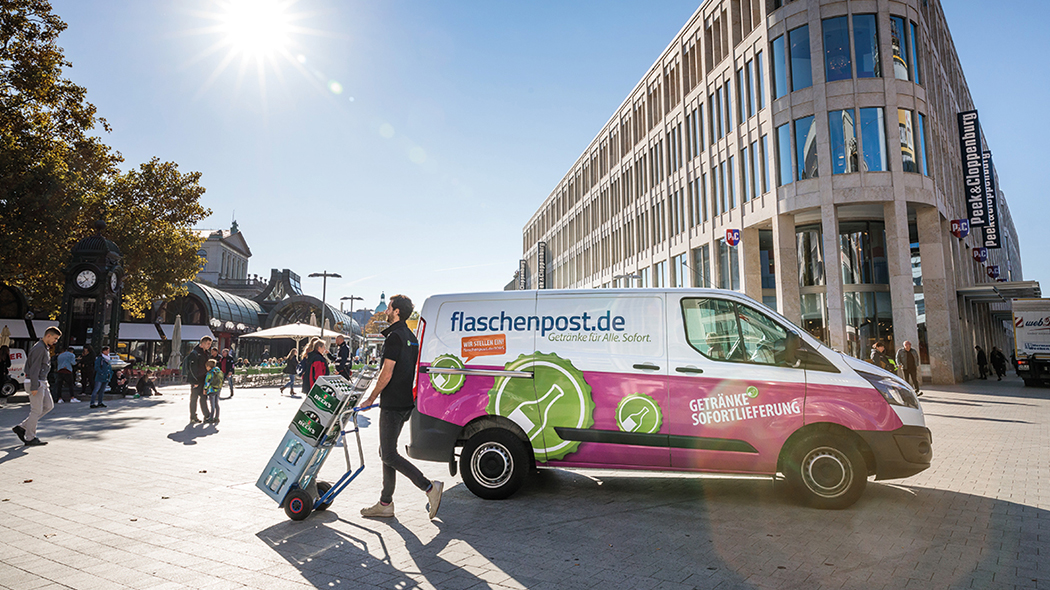IoT and Cloud for Better Customer Service
12.07.2021 by Annalena Rauen

“Delivered in 120 Minutes” is flaschenpost’s USP, and to deliver on this proposition in peak periods the beverage supplier now relies on IoT devices and Telekom’s Azure Cloud.
Two hours is the longest customers need to wait for their sparkling water, fruit juice or beer. They won’t have to wait longer to slake their thirst if they order drinks for delivery by flaschenpost. This attractive promise has made a major contribution toward the young enterprise’s success. It is also one of the greatest challenges the delivery service has set itself. Drivers of the pink and white vans currently deliver around 60,000 crates of beverages a day that are ordered on the Internet, providing an express service without schlepping, deposit “congestion” or extra charges.





